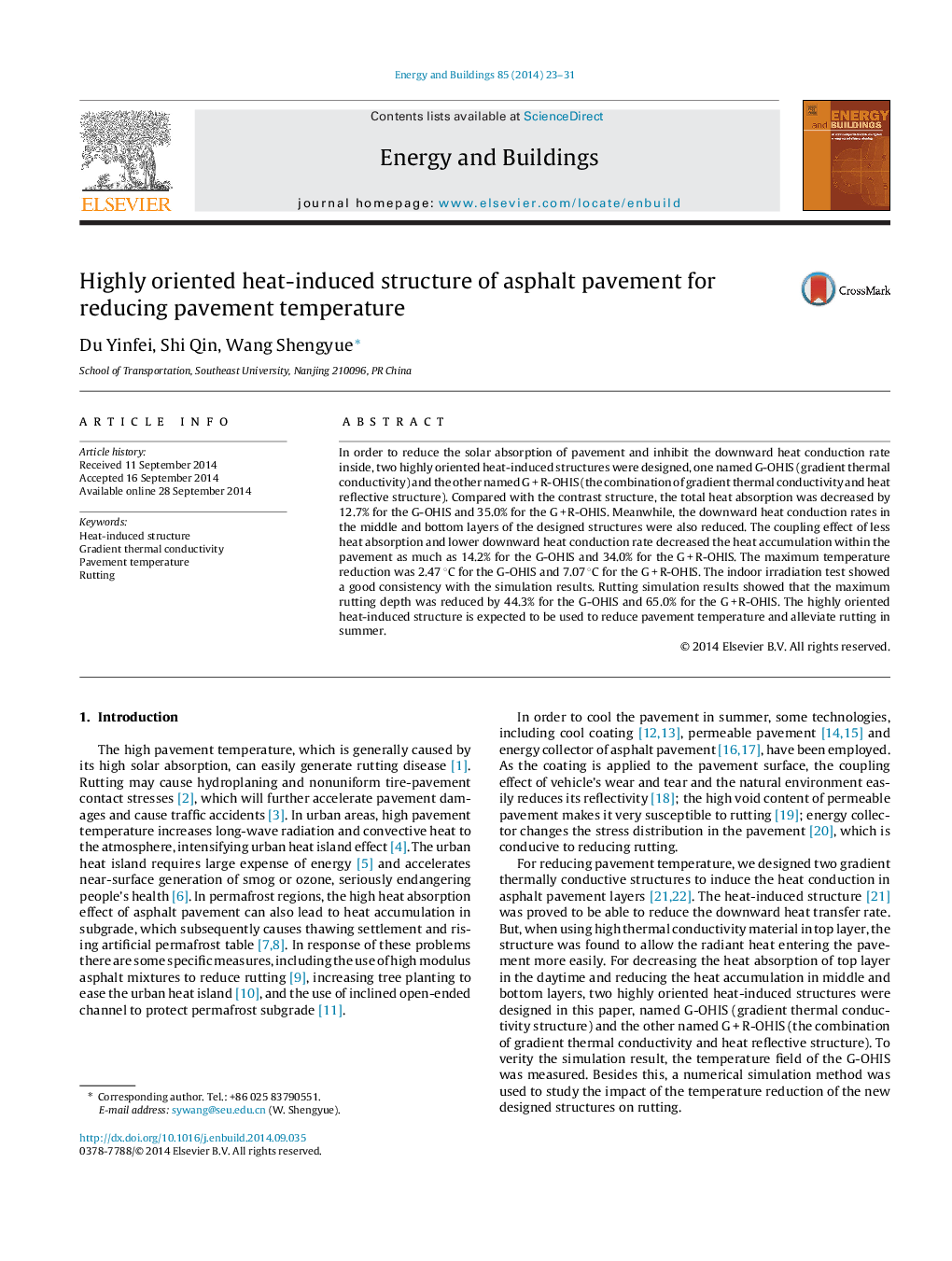| Article ID | Journal | Published Year | Pages | File Type |
|---|---|---|---|---|
| 6733054 | Energy and Buildings | 2014 | 9 Pages |
Abstract
In order to reduce the solar absorption of pavement and inhibit the downward heat conduction rate inside, two highly oriented heat-induced structures were designed, one named G-OHIS (gradient thermal conductivity) and the other named G + R-OHIS (the combination of gradient thermal conductivity and heat reflective structure). Compared with the contrast structure, the total heat absorption was decreased by 12.7% for the G-OHIS and 35.0% for the G + R-OHIS. Meanwhile, the downward heat conduction rates in the middle and bottom layers of the designed structures were also reduced. The coupling effect of less heat absorption and lower downward heat conduction rate decreased the heat accumulation within the pavement as much as 14.2% for the G-OHIS and 34.0% for the G + R-OHIS. The maximum temperature reduction was 2.47 °C for the G-OHIS and 7.07 °C for the G + R-OHIS. The indoor irradiation test showed a good consistency with the simulation results. Rutting simulation results showed that the maximum rutting depth was reduced by 44.3% for the G-OHIS and 65.0% for the G + R-OHIS. The highly oriented heat-induced structure is expected to be used to reduce pavement temperature and alleviate rutting in summer.
Keywords
Related Topics
Physical Sciences and Engineering
Energy
Renewable Energy, Sustainability and the Environment
Authors
Du Yinfei, Shi Qin, Wang Shengyue,
